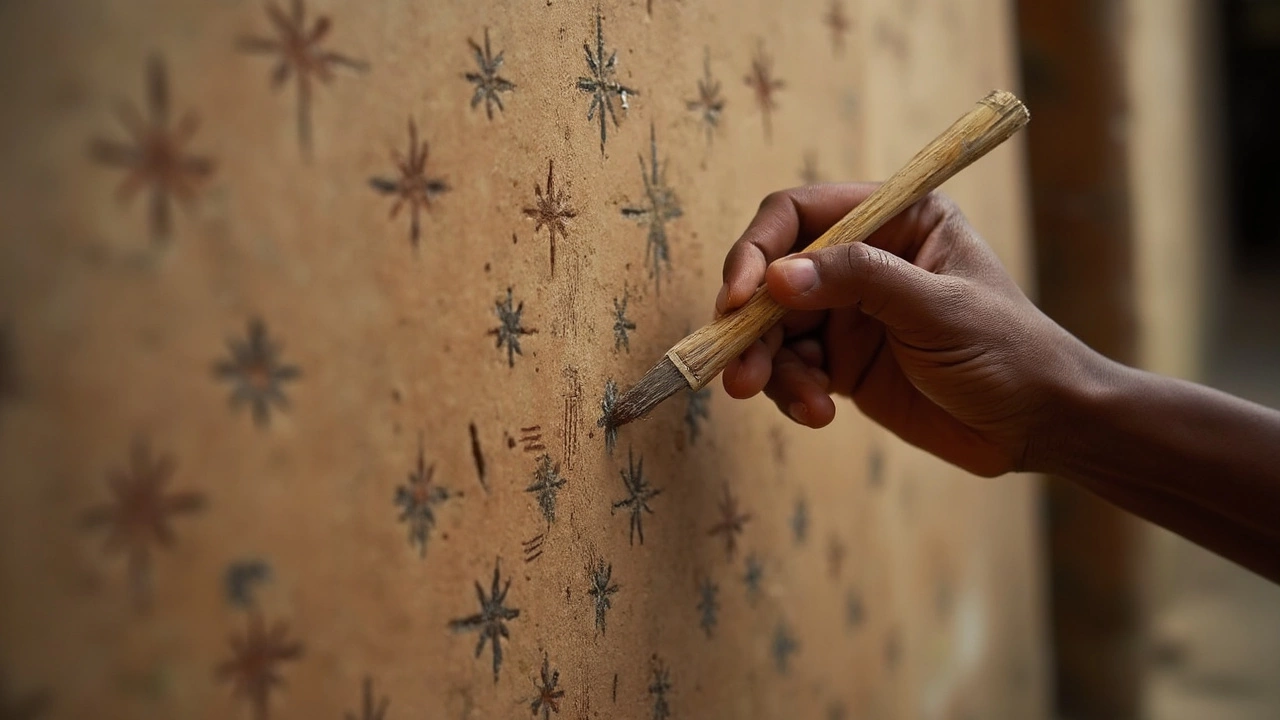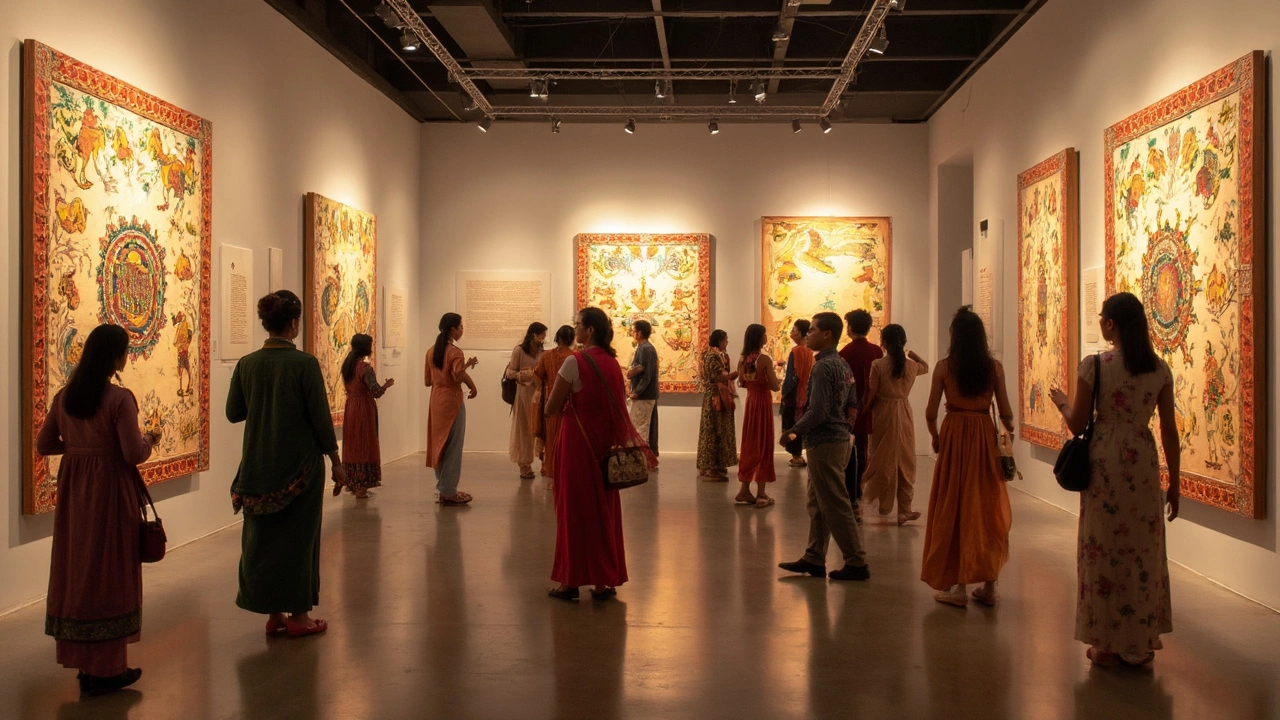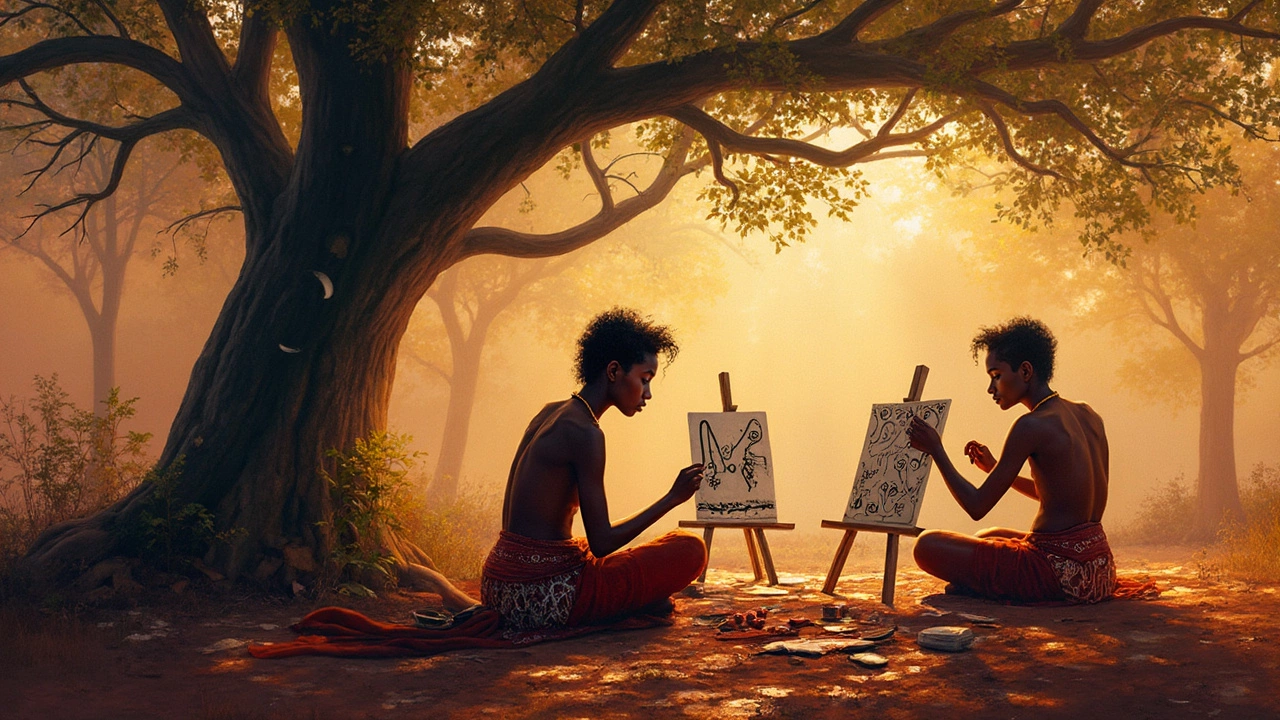When we think about ancient Indian art, we're often drawn to the vibrant hues of miniature paintings or the grandeur of temple sculptures. Yet, among these, there's a form of art that might not grab the headlines but is rich in tradition and complexity: Warli painting.
This tribal art style comes from the Warli tribe in Maharashtra. At first glance, these might seem simple, with their predominance of circles, triangles, and squares. But beneath this simplicity lies a deep storytelling tradition, portraying everything from daily life to complex myths.
The thing that often makes Warli art particularly challenging is its reliance on precision. Imagine trying to express a community's whole way of life using just a limited set of geometric shapes. That's what sets this art apart. The artists use rice paste on mud walls, blending with the natural environment effortlessly. This isn't just an art form; it's a conversation passed down through generations.
- Introduction to Ancient Indian Art
- Origin of Warli Art
- The Craftsmanship Behind Warli Paintings
- Cultural Significance and Stories
- Challenges in Preserving Warli Art
Introduction to Ancient Indian Art
India is a treasure trove of art and culture, with its roots running deep into centuries of fascinating history. Among its many offerings, ancient Indian art stands out as a vivid portrayal of the country's diverse storytelling traditions and cultural practices.
Now, when we talk about ancient art from this region, we are diving into a spectrum that includes intricate paintings and detailed sculptures. From the refined brushstrokes of Mughal miniatures to the robust stone carvings of South Indian temples, every piece tells a piece of the country's extensive story.
The Varied Canvas of Indian Art
Art in India doesn't just stick to stone and canvas; you see it in frescoes, pottery, and textiles too. The Ajanta and Ellora caves, for example, serve as canvases for some of the most well-preserved frescoes and rock-cut sculptures. These works aren't just decorative; they capture religious stories, social practices, and spiritual beliefs.
In the world of painting, we have everything from the bright and bold Madhubani paintings of Bihar to the delicate Pithora paintings from Gujarat. Each of these gives insights into the life and times of the places and people they represent.
The Intangible Elements of Traditional Art
Perhaps even more intriguing is the oral history that accompanies many of these art forms. Ancient Indian art is often a blend of visual beauty and intangible cultural narratives. Take Warli art as an example. While the geometric figures might seem basic, they were more than just shapes for decoration — they were vital for storytelling and recording oral traditions.
To really get the whole picture, you often need to delve into the life of the communities that create these art forms. Whether it’s the vibrant colors used in traditional Indian paintings or the material used for sculptures, each choice has cultural significance.
Origin of Warli Art
When you hear about the origins of Warli art, you're essentially diving into the cultural history of the Warli tribe, residing in the Western Ghats of Maharashtra. These communities have lived off the land for centuries, and their unique artistic expression is a profound reflection of their life and surroundings.
The Dawn of a Tradition
Warli art dates back to roughly the 10th century A.D., although it remained largely unknown until it was 'discovered' by outsiders in the late 20th century. The art form emerged as a basic necessity for these agrarian tribes to communicate and record their daily activities and rituals, especially since they were largely non-verbal cultures.Traditional Warli paintings originally adorned the interior walls of their clay huts. These images weren't just for decoration, though; they were part of wedding rituals or harvest celebrations. The heart of Warli art lies in its mediums—mud, cow dung, and rice paste—to create contrasting monochrome depictions against earthy backdrops.
Symbolic Storytelling
At its core, this ancient Indian art form is all about storytelling. The paintings typically incorporate scenes of hunting, fishing, farming, dances, and festivals, providing a window into the tribe's daily life and beliefs. The scary part? Every little piece of the art—from humans as stick figures to animals—is crafted with symbolic precision, making them masters of conveying narratives with minimal lines and forms.Warli art doesn't just stand as an artifact of the past; it's a living tradition, one that's constantly evolving while staying true to its roots. This makes understanding its origin not just about history, but also about appreciating how something so ancient blends into modern life seamlessly.

The Craftsmanship Behind Warli Paintings
Diving into the meticulous artistry of Warli art is like unraveling a world that thrives on simplicity yet demands immense skill. These paintings are not just random doodles on walls but carry generations of craft and expertise. So, let's see what makes the painting process so unique.
Materials and Technique
Warli paintings are made using natural and easily accessible materials. The canvas is typically the mud, charcoal, and cow dung-treated walls of village huts, a surface that provides texture and character. The artists use rice paste for the art itself, mixed with water and gum to create a contrast on the walls' earthy surface.
The real challenge lies in the application of this paste with precision and intent. Artists use a bamboo stick, chewed at one end to create a brush, which requires a steady hand and loads of patience. Can you imagine? A whole art style developed using just that!
Core Elements and Symbols
The beauty of Warli art is its abstraction, grounded in geometric shapes—circles representing the sun and moon, triangles depicting mountains or trees, and squares for sacred enclosures or a piece of land. Every symbol holds cultural significance, enhancing storytelling.
- Circle: Represents natural elements like the sun and moon.
- Triangle: Symbolizes mountains or pointed tree tops.
- Square: Stands for sacred patches of land or meeting grounds.
Storytelling Through Art
Warli art isn't just about shapes. It's about capturing the tribe's social and cultural experiences, like fishing, hunting, farming, and even religious ceremonies. These paintings keep oral history alive, an essential tool since the Warli community didn't have a written script!
The depth of these stories lies in their execution. Each painting unfolds a tale that can surprise even the initiated. For instance, you might spot animals pursuing humans, not in fear or threat, but as part of the community's larger narrative—a statement on living in harmony with nature.
Cultural Significance and Stories
Warli paintings have this amazing ability to talk about the daily grind and the spiritual beliefs of the Warli tribe from Maharashtra. It's like flipping through a visual diary that dates back centuries, yet still resonates today.
The art primarily depicts scenes from nature and the tribe's daily life—everything from farming and hunting to rituals and festivals. These aren't random scribbles; each figure and scene has a purpose and tells a story. What's fascinating is how these stories have remained consistent over the years, helping maintain the cultural significance of the tribe.
Ritualistic Themes
One key theme in Warli art is its ritualistic nature. The paintings are often part of ceremonies, especially those involving harvests or marriages. They serve as both a blessing from the gods and a visual manifestation of prayers. Imagine a whole community gathering to create these paintings, making the very act of creating art a sacred practice.
Nature-Centric Storytelling
If you look deeper, the art is heavily nature-centric. You’ll find scenes involving animals, trees, and rivers, often illustrating a harmonious existence with the natural world. Every animal or plant has a role to play, emphasizing ecological balance, long before it became a global buzzword.
Oral Tradition in Visual Form
The paintings also act as a visual reinforcement of oral narratives that have been passed down through generations. This means the art does more than just look pretty; it helps preserve the tribe's ancient stories, which might otherwise be forgotten.
| Theme | Common Elements |
|---|---|
| Marriage Rituals | Dance circles, community gatherings |
| Harvest Celebrations | Farming, nature elements |
| Spiritual Beliefs | Deities, abstract symbols |
By understanding these cultural elements, we can see why Warli art remains a vital part of both the tribe's identity and the broader tapestry of ancient Indian art. It's not just about art, but preserving a way of life through each brushstroke.

Challenges in Preserving Warli Art
Preserving Warli art isn't straightforward. It's more than sticking canvases in a museum. Warli paintings, traditionally done on mud walls with rice paste, face erosion from modernization and neglect. With urbanization swelling, these artworks' original settings often get replaced by concrete structures.
Urbanization and Loss of Tradition
As villages grow into towns, mud huts fall to bricks. The traditional canvas for Warli art vanishes with them. It’s not just physical though; the younger generation sometimes sees this art as old-fashioned. So, passing on the skills and stories faces real hurdles.
Global Exposure vs. Cultural Integrity
Global interest in ancient Indian art shines a spotlight on Warli art, driving demand for Warli-inspired goods. While this newfound appreciation is fantastic, commercial pressures can dilute authenticity. We sometimes see mass-produced "Warli" but lacking in their authentic storytelling spirit.
Preservation Efforts Amidst Challenges
Efforts to preserve Warli art are underway. Organizations are trying to support local artisans, ensuring that this art survives and prospers without losing its traditional grit.
"The balance between preserving authenticity and promoting Warli art globally is key. Without genuine stories, the art loses its soul," – Dr. Ila Bhattacharya, art historian.
Steps to Protect Warli Art
- Community Workshops: Organize sessions within the community to teach traditional techniques.
- Incentives for Artisans: Provide financial support/resources to artisans for sustainability.
- Public Awareness Campaigns: Raise awareness around the cultural significance and original meaning of Warli art.
Importance has also been placed on using modern technologies for cataloging and archiving traditional patterns and stories alongside workshops. These efforts aim to maintain the authenticity while also adapting where necessary.
